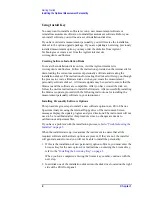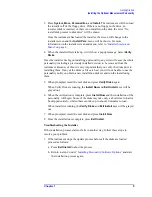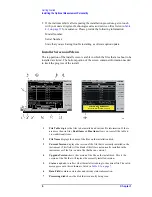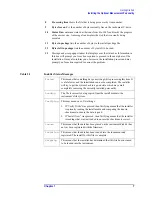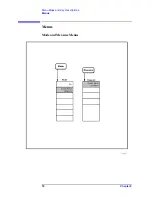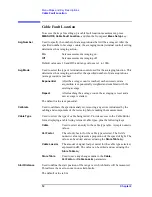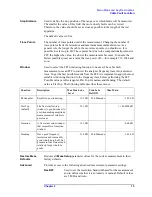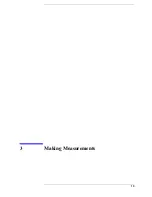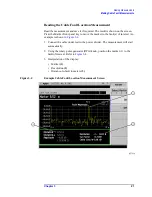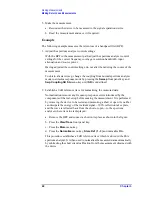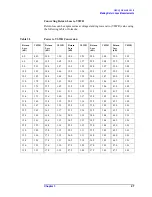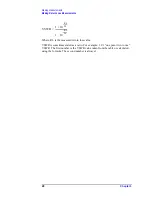
Chapter 2
13
Menu Maps and Key Descriptions
Cable Fault Location
Stop Distance
Used to define the stop position of the range over which faults will be measured.
The smaller the value of this field, the more closely faults can be viewed.
Therefore, the value should be set as close as possible to the length of the test
apparatus.
The default value is 20 m.
Trace Points
The number of trace points used in the measurement. Changing the number of
trace points affects the minimum and maximum measurable distances. As a
general rule, the longer the cable, the more trace points you should use. It is
possible to select up to 8192 trace points but due to the computationally-intensive
FFT, the higher the value, the slower the measurement becomes. To ensure the
fastest possible speed, use a value that is a power of 2—for example 512, 1024 and
so on.
Window
Used to select the FFT windowing function to be used. The cable fault
measurement uses an FFT to convert the analyzer frequency trace into a distance
trace. To get the best possible results from the FFT, it is important to apply the most
suitable windowing function to the frequency trace before performing the FFT.
Possible values are Rectangular, Flat Top, Gaussian, and Hanning. The default
value is Flat Top. The following table describes these values.
Restore Meas
Defaults
Restores all
Meas Setup
parameter values for the current measurement to their
factory defaults.
Advanced
Provides access to the following advanced measurement parameter settings:
Res BW
Used to set the resolution bandwidth used for the measurement
and to define whether it is automatic or manual. Default values
are 3 MHz and Auto.
Function
Description
Max Side-Lobe
Level
Side-Lobe
Roll Off
Max Main
Rectangular
Results in no windowing.
–13.3 dB
20 dB/decade
–3.92 dB
Flat Top
(default)
The five term flat-top
window. A good window to
use when making amplitude
measurements of relatively
pure tones.
–95.1 dB
+/–0.00208 dB
Gaussian
A five term cosine window
that resembles a Gaussian
window.
–125 dB
–0.68 dB
Hanning
Has a good frequency
resolution and reasonably
good side-lobe roll-off, but
poor main-lobe flatness and
relatively large side-lobe
peaks.
–31.5 dB
60 dB/decade
–1.42 dB
Summary of Contents for ESA-E Series
Page 4: ...iv ...
Page 6: ...vi Contents ...
Page 7: ...1 1 Getting Started This chapter describes the process for installing the personality ...
Page 14: ...8 Chapter1 Getting Started Installing the Optional Measurement Personality ...
Page 16: ...10 Chapter2 Menu Maps and Key Descriptions Menus Menus Mode and Measure Menus ...
Page 21: ...15 3 Making Measurements ...
Page 44: ...38 Chapter4 If You Have a Problem Before You Call Agilent Technologies ...
Page 46: ...Index 2 Index ...






